Introduction
Kalimba, just a simple folk instrument or a gateway to musical enlightenment? While some may underestimate its complexity, the Thumb Piano, with roots stretching back to ancient Africa, has woven its melodies through centuries. Originally used in ceremonies and storytelling, its enchanting tones have crossed oceans, finding a place in modern music and therapy. Today, it’s not just about tradition; it’s about connection and the joy of creating music easily. So, let’s dive in, embrace the resurgence of this humble instrument, and discover how, with just a touch of our thumbs, we can all be musicians.
What is the Thumb Piano (Kalimba)?
The Thumb Piano, commonly known as the Kalimba, is a small, handheld musical instrument with a body made of wood and a series of metal tines of varying lengths. Its magic begins with a simple touch; by plucking the tines with your thumbs, it produces a clear, melodic sound that can evoke a range of emotions, from joy to deep contemplation. The Kalimba’s compact size and intuitive playability make it an accessible instrument for music lovers of all ages and skill levels.
Exploring the Types of Thumb Pianos and Their Unique Sounds
The Traditional Kalimba
- Description: Often made with a wooden body and metal tines, the traditional Kalimba carries the essence of its African roots.
- Sound: Produces a warm, woody tone that’s both soothing and uplifting.
- Experience: Playing it feels like a journey back in time, connecting with the instrument’s rich history.
The Modern Electric Kalimba
- Description: Equipped with electronic pickups, this version allows for amplification and effects.
- Sound: Offers a versatile range of sounds, from classic acoustic to experimental.
- Experience: It’s like having a mini-orchestra at your fingertips, perfect for exploring new musical landscapes.
The Acrylic Kalimba
- Description: Made from transparent acrylic, this Kalimba stands out for its sleek, modern look.
- Sound: Delivers a brighter tone compared to its wooden counterpart.
- Experience: Playing it feels crisp and refreshing, adding a visual flair to the musical experience.
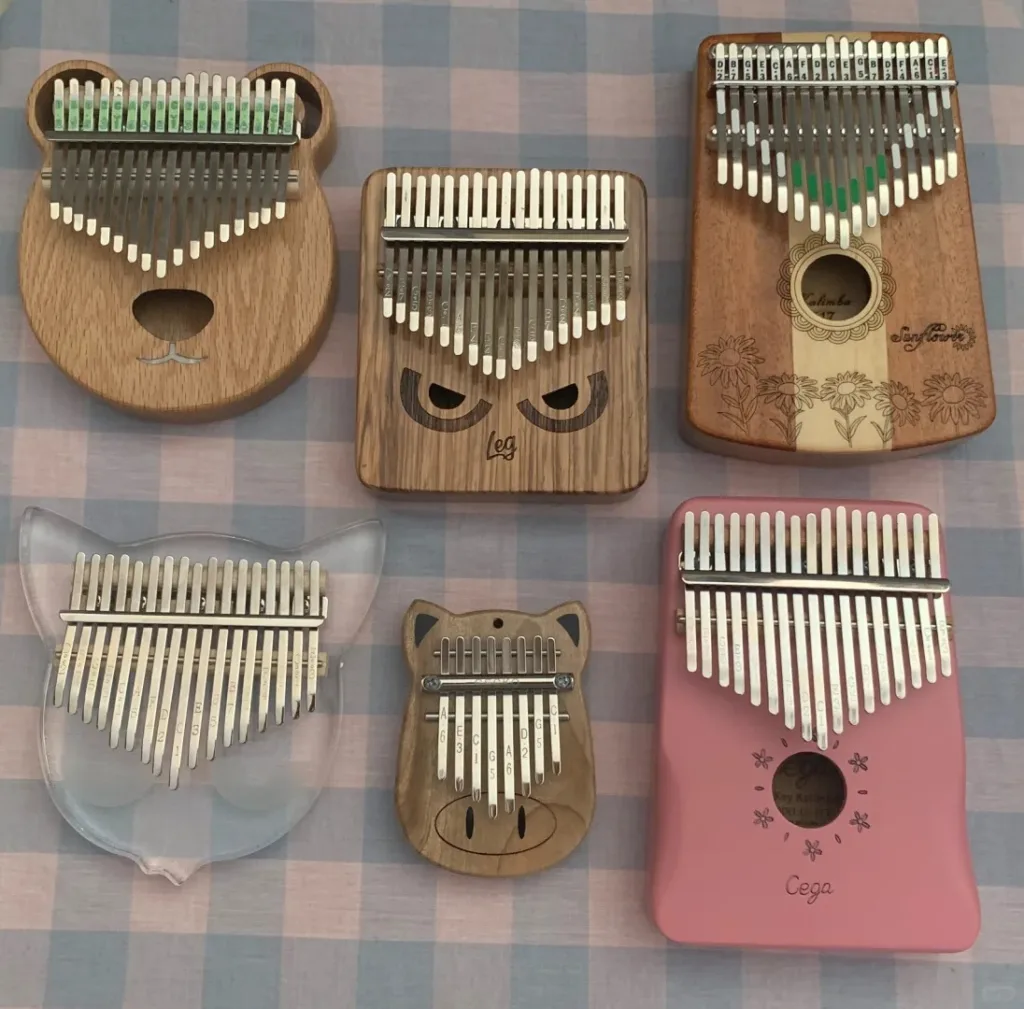
The Role of the Thumb Piano in Various Musical Genres
The Thumb Piano is not just a traditional African instrument; it has found its way into a variety of musical genres, showcasing its versatility. From the soothing melodies in meditation music to its rhythmic use in folk and world music, the Kalimba adds a unique texture that enriches the musical composition. It’s also making waves in pop and indie music, where artists use its distinctive sound to add depth and character to their songs. The Kalimba’s ability to blend with other instruments while standing out as a solo voice makes it a favorite among musicians looking for something new and exciting to bring to their sound.
Tuning Your Thumb Piano: A Key to Melodic Harmony
Tuning your Thumb Piano is like giving voice to an instrument that speaks the language of the soul. It’s not just about hitting the right notes; it’s about creating a harmony that resonates with your inner rhythm. Let’s dive into why tuning is crucial and how you can master this art with ease.
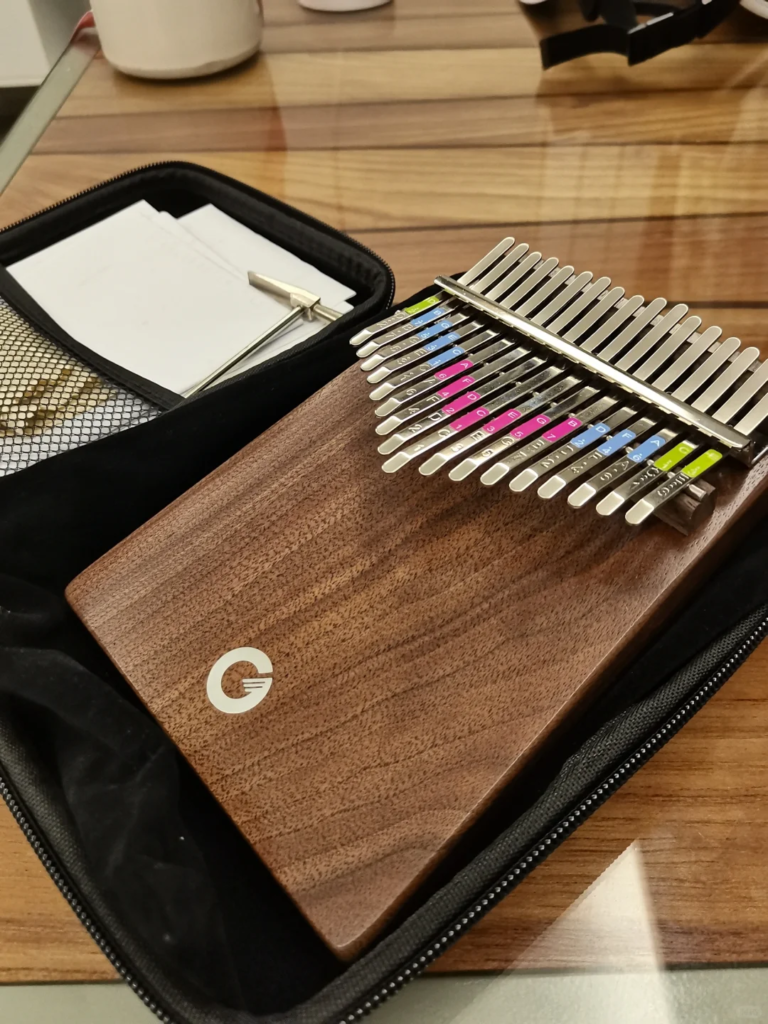
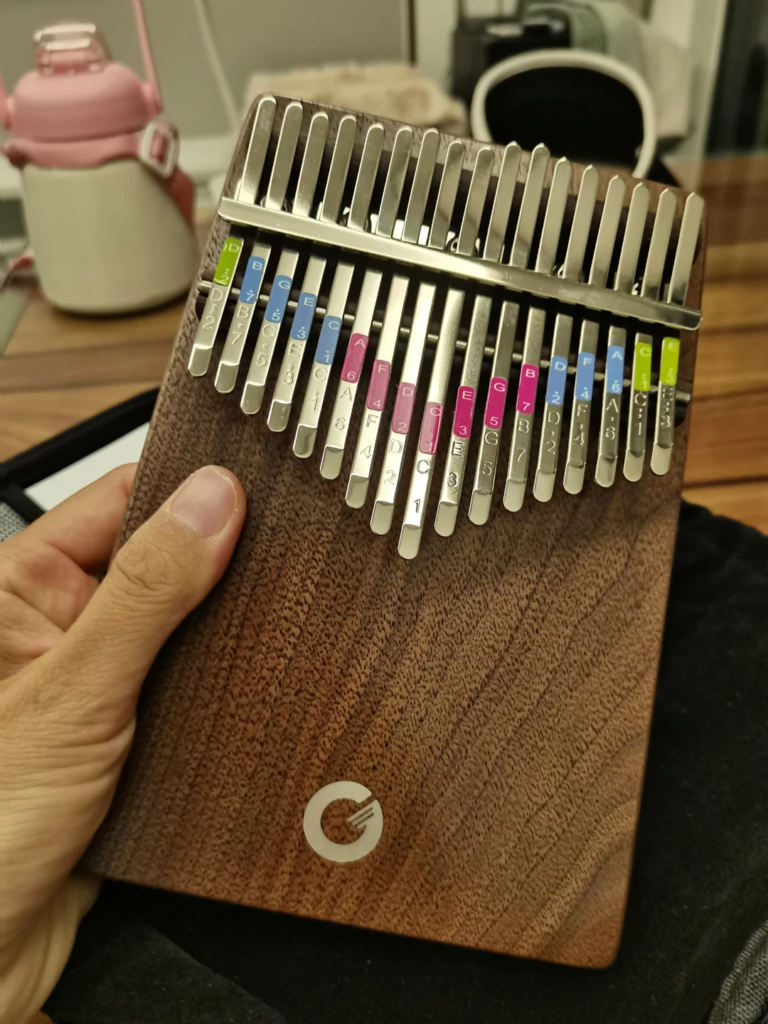
The Importance of Tuning Your Thumb Piano
Imagine listening to a song where the notes are off-key. It feels jarring, right? That’s exactly why tuning your Thumb Piano is essential. It ensures each note flows seamlessly into the next, producing melodies that soothe, uplift, and inspire. A well-tuned Kalimba is a vessel for pure musical expression, allowing you to connect deeply with the music you create.
Step-by-Step Guide on How to Tune a Thumb Piano
Tuning your Thumb Piano might seem daunting at first, but with these simple steps, you’ll find it’s quite straightforward:
- Identify the Current Tuning: Start by identifying the notes of each tine using a tuning app or electronic tuner. This gives you a baseline to work from.
- Decide on Your Tuning: Kalimbas can be tuned to various scales, depending on the music you wish to play. Common tunings include C Major, G Major, or custom tunings for specific songs.
- Adjusting the Tines: Use a tuning hammer to gently tap the tines. Tap down to raise the pitch, and tap up (towards the bridge) to lower it. Small adjustments can make a big difference, so proceed with care.
- Fine-Tuning: Recheck the tuning each time with your tuner and make any necessary adjustments. It’s often a process of back-and-forth until each tine is perfectly tuned.
- Repeat as Needed: The more you play your Kalimba, the more you’ll get a feel for its tuning needs. Regular checks will keep it sounding beautiful.
Tools Needed for Tuning and Maintenance Tips
- Tuning Hammer: Essential for making precise adjustments to the tines.
- Electronic Tuner or App: Helps accurately identify the pitch of each tine.
- Cleaning Cloth: Keep your Kalimba dust-free and looking its best.
- Occasional Wood Treatment: If your Kalimba is wooden, treating the body with a wood conditioner can keep it resonant and prevent cracking.
Maintenance Tip: Always store your Thumb Piano in a case or bag when not in use to protect it from dust and accidental bumps. Regularly check for loose tines or screws, as these can affect the sound quality.
Playing Your First Notes on the Thumb Piano
Embarking on your musical journey with the Thumb Piano opens up a world of melodic possibilities. Even if you’ve never played an instrument before, the Thumb Piano stands out for its simplicity and the immediate joy it brings. Let’s break down the basics to get you started on this enchanting instrument.
Basic Techniques for Playing the Thumb Piano
Mastering a few fundamental techniques can transform your experience with the Thumb Piano from mere experimentation to creating actual music.
- Proper Holding: Sit comfortably and hold the Thumb Piano with both hands, letting it rest in your palms. Ensure it’s stable but not gripped too tightly, allowing your thumb freedom to move.
- Thumb Positioning: Your thumbs are the stars of the show. Position them above the tines, with your nails slightly overhanging the edge. This position gives you the leverage to pluck the tines effectively.
- Plucking the Tines: Gently press down on a tine with your thumb and let it flick off, producing a note. The motion should be fluid and relaxed, originating from the joint closest to your thumb tip.
- Creating Rhythm: Start with simple back-and-forth patterns between your left and right thumbs. This alternating action is the foundation of Thumb Piano music.
- Dynamics and Expression: Varying the pressure and speed of your plucking will change the volume and expression of the notes. Experiment with soft, lingering notes and sharper, quicker ones to convey different emotions.
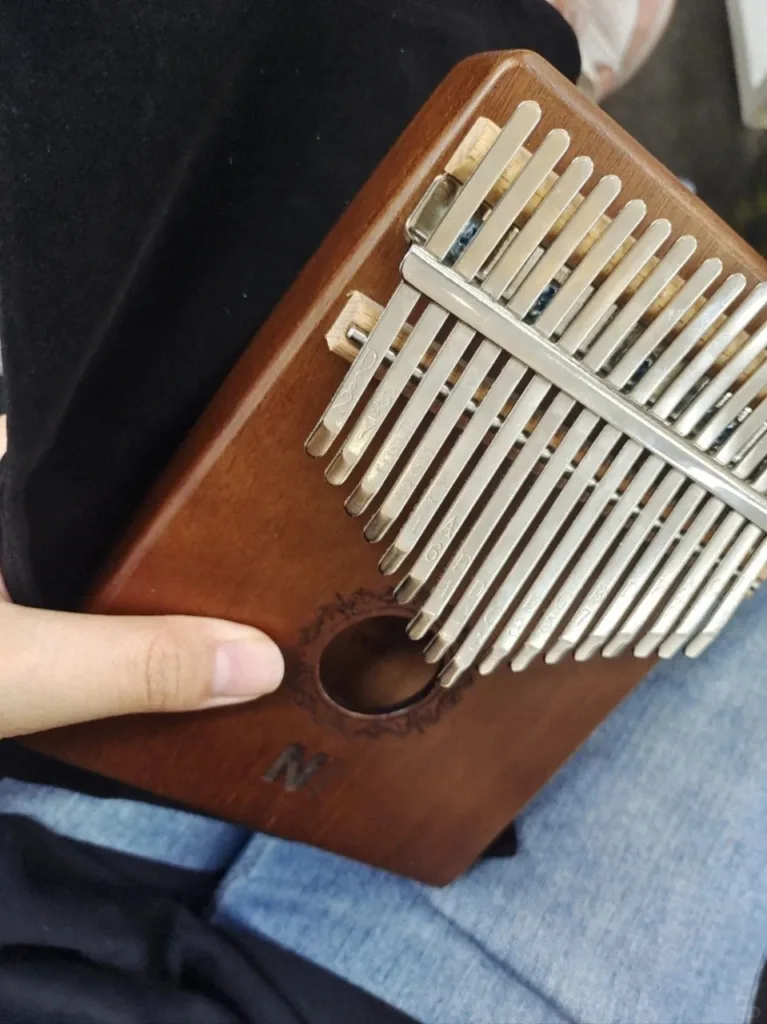
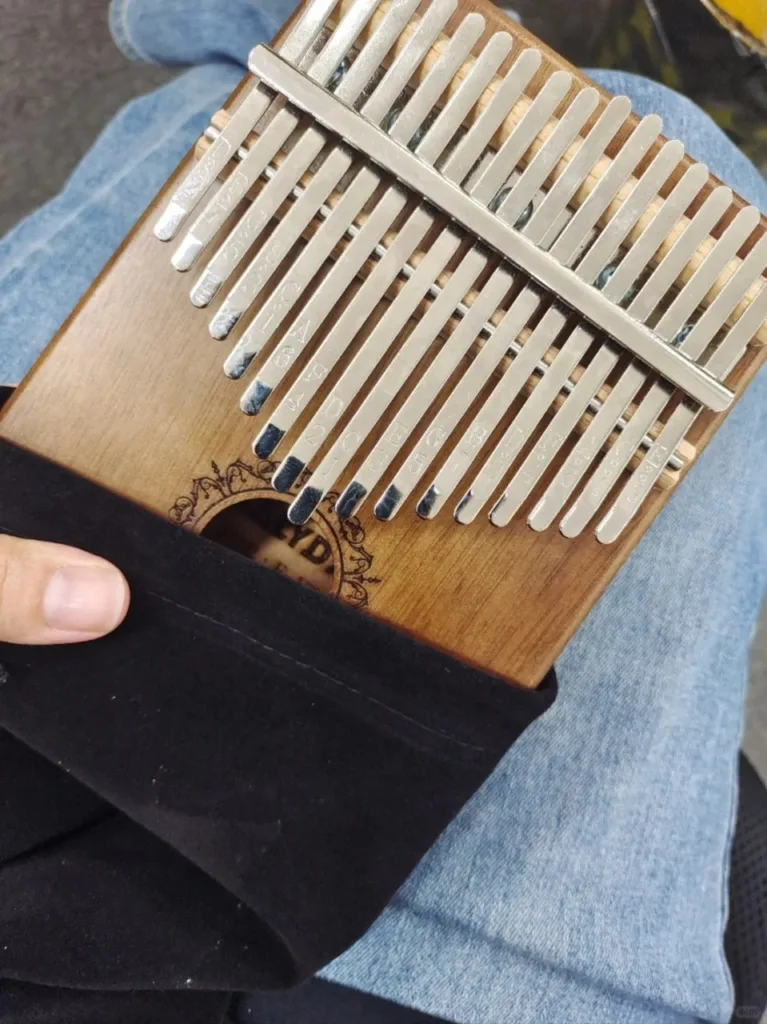
Understanding the Layout of Notes and Keys
The Thumb Piano’s keys are laid out in a pattern that might seem puzzling at first glance but is quite intuitive once you understand it. The longest time in the center typically represents the root note of the scale, with alternating notes spreading out to the sides in a pattern. This layout means that playing adjacent tines will not produce consecutive notes in a scale; instead, you’ll often alternate between left and right thumbs to ascend or descend melodically.
Simple Exercises to Get Started
- Familiarize with the Scale: Begin by playing each tine from the center outward, one at a time, to familiarize yourself with the scale and the sound of each note.
- Scale Practice: Start with your right thumb on the center tine (the root note) and alternate thumbs to play each note in the sequence, moving outward. Repeat this process back to the center note. This exercise helps build coordination and muscle memory.
- Simple Melodies: Try playing simple melodies that you know by ear, like “Twinkle, Twinkle, Little Star.” This practice will improve your ear for music and your familiarity with the instrument’s layout.
- Rhythmic Patterns: Create simple rhythmic patterns by alternating between two or three times. Focus on keeping a steady tempo and experimenting with different dynamics.
Simple Songs and Tabs for Thumb Piano Beginners
Diving into the world of music with your Thumb Piano doesn’t have to be daunting. With the right starter songs and a basic understanding of how to read Kalimba tabs, you’ll be playing melodies in no time. Let’s explore how you can begin this musical adventure with some easy songs and practical tips.
Introduction to Reading Kalimba Tabs
Kalimba tabs are a visual representation of music specifically designed for the Thumb Piano. They show which tines to pluck and in what sequence to play a song. Here’s a quick guide to understanding them:
- Numbers and Letters: Each tine is represented by a number or letter, corresponding to a specific note.
- Vertical Lines: These represent the tines of the Kalimba, with the line in the center usually denoting the longest (middle) tine.
- Sequence: The order in which you pluck the tines is shown from left to right, indicating the melody’s flow.
Easy Songs to Start With
Starting with simple songs allows you to get comfortable with the instrument and reading tabs. Here are two classic melodies that are perfect for beginners:
- “Twinkle, Twinkle, Little Star”
- Tabs: 1° 1° 5° 5° 6° 6° 5° | 4° 4° 3° 3° 2° 2° 1°
- Tips: This song uses a straightforward scale pattern, making it ideal for practicing your thumb coordination and timing.
- “Happy Birthday”
- Tabs: 3° 3° 4° 3° 1° 7 | 3° 3° 4° 3° 2° 1°
- Tips: A bit more challenging due to the jumps in notes, this song is great for practicing transitions between tines.
Tips for Practicing and Improving Your Skills
- Start Slow: Focus on accuracy rather than speed. Gradually increase your tempo as you become more comfortable with the song.
- Use a Metronome: This helps develop your timing and rhythm, essential skills for any musician.
- Daily Practice: Even just 10-15 minutes a day can lead to significant improvements over time.
- Experiment with Songs: Once you’re comfortable with basic songs, try learning tunes by ear or creating your melodies.
- Record Yourself: Listening back to your playing can highlight areas for improvement and track your progress.
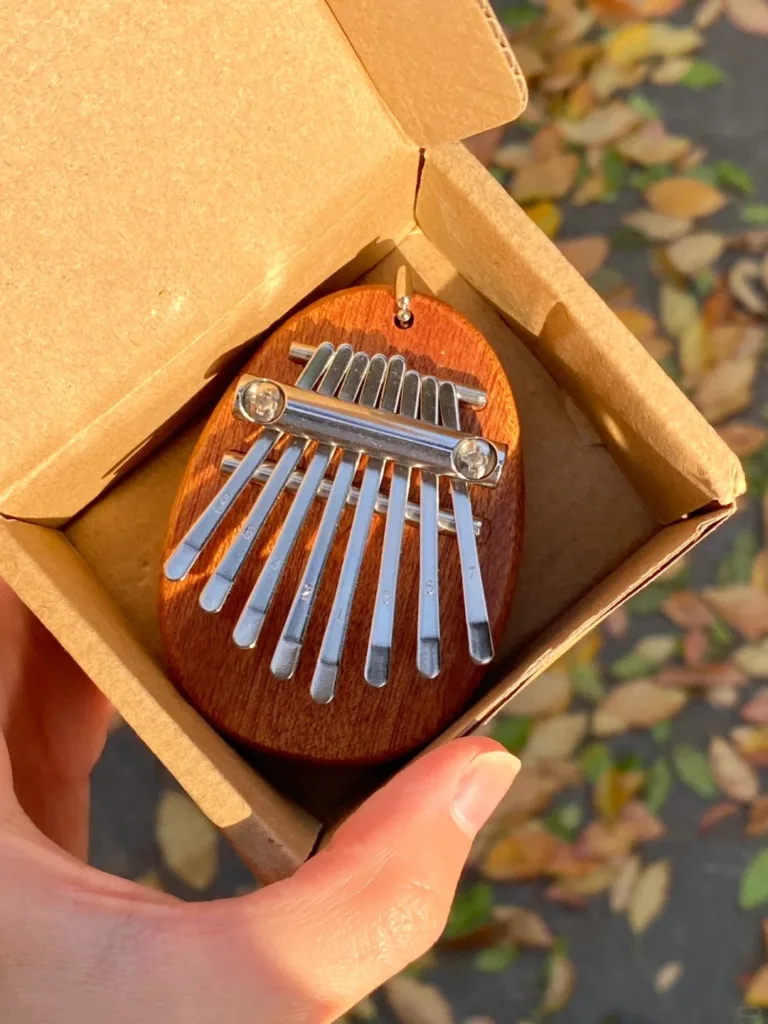
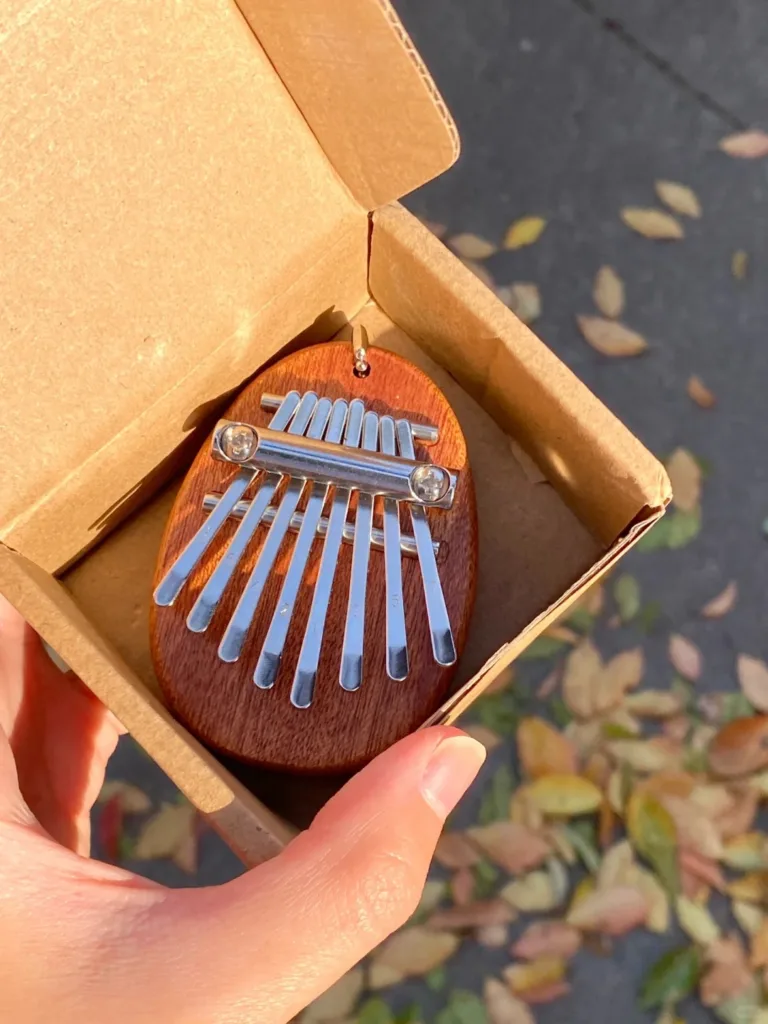
Conclusion: The Harmonious Journey of the Thumb Piano
Embarking on the journey of learning the Thumb Piano is more than just acquiring a new skill; it’s about discovering a world of musical joy and creativity. This enchanting instrument, with its soothing tones and accessible playability, offers a unique way to express oneself and connect with music on a profound level.
I encourage you to dive into the melodies, to not just learn but to explore and create. The Thumb Piano is a gateway to musical exploration, where the possibilities are as vast as your imagination. Whether you’re crafting your own songs or delving into the rich repertoire available, each note played is a step further in your musical adventure.
Popular Thumb Piano Musicians and Albums to Explore
- Kevin Spears – “Kalimba Magic”
- Known for his innovative approach to the Kalimba, Kevin Spears blends traditional playing with modern technology, creating a sound that’s truly unique.
- Hajime Yoshida – “Kalimba Collection”
- Yoshida’s album is a testament to the Kalimba’s versatility, featuring compositions that range from soothing to upbeat, all played with exquisite skill.
- Laura Inserra – “Metamusic”
- Inserra uses the Kalimba to explore deep musical landscapes, creating soundscapes that are meditative and transformative.
- Chris Berry & Panjea – “Dancemakers”
- Berry, a master of the Mbira (a close relative of the Kalimba), offers a fusion of African rhythms with contemporary sounds, making for an energetic and compelling listen.
- Tinashe Makura – “Hello”
- Makura incorporates the Kalimba into pop music with a fresh, joyful sound that showcases the instrument’s potential in mainstream genres.
- Ephat Mujuru – “Journey of the Spirit”
- A master of the Mbira, Mujuru’s album is a deep dive into the spiritual roots of this instrument, offering a traditional and soulful experience.
- Thomas Mapfumo and The Blacks Unlimited – “Chimurenga Explosion”
- Mapfumo uses the Mbira extensively in his music, which is a powerful blend of traditional Zimbabwean music and political messages.

